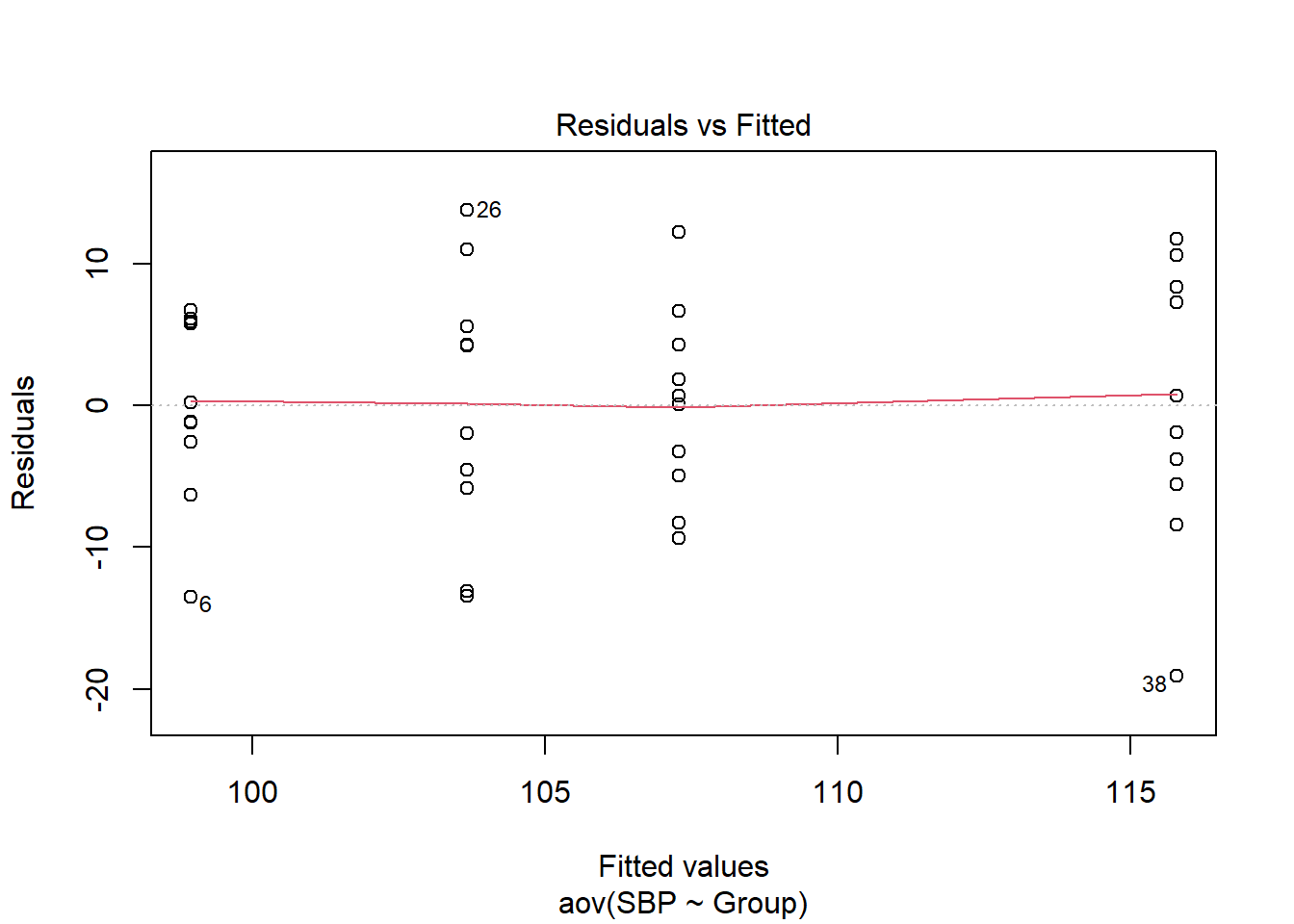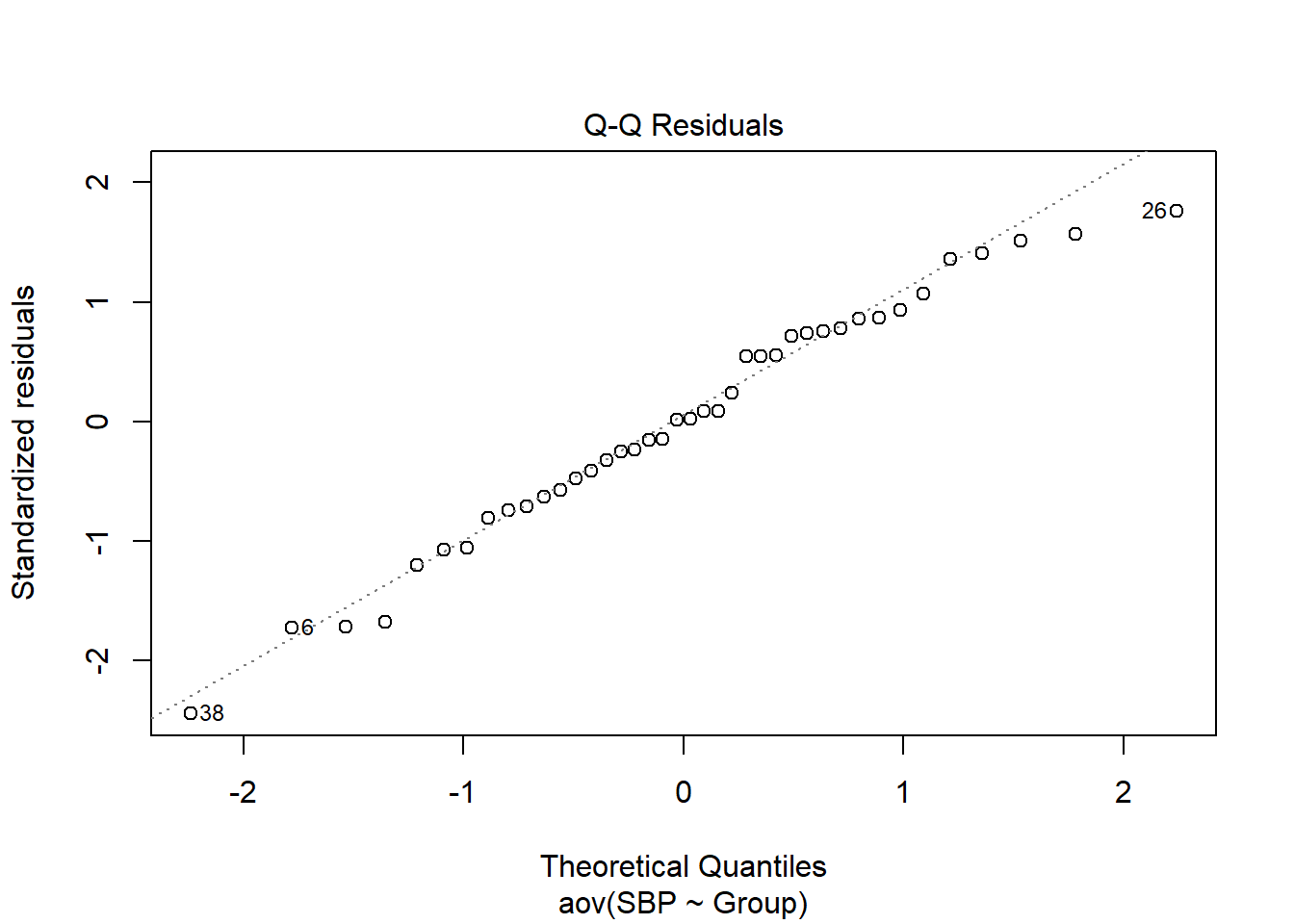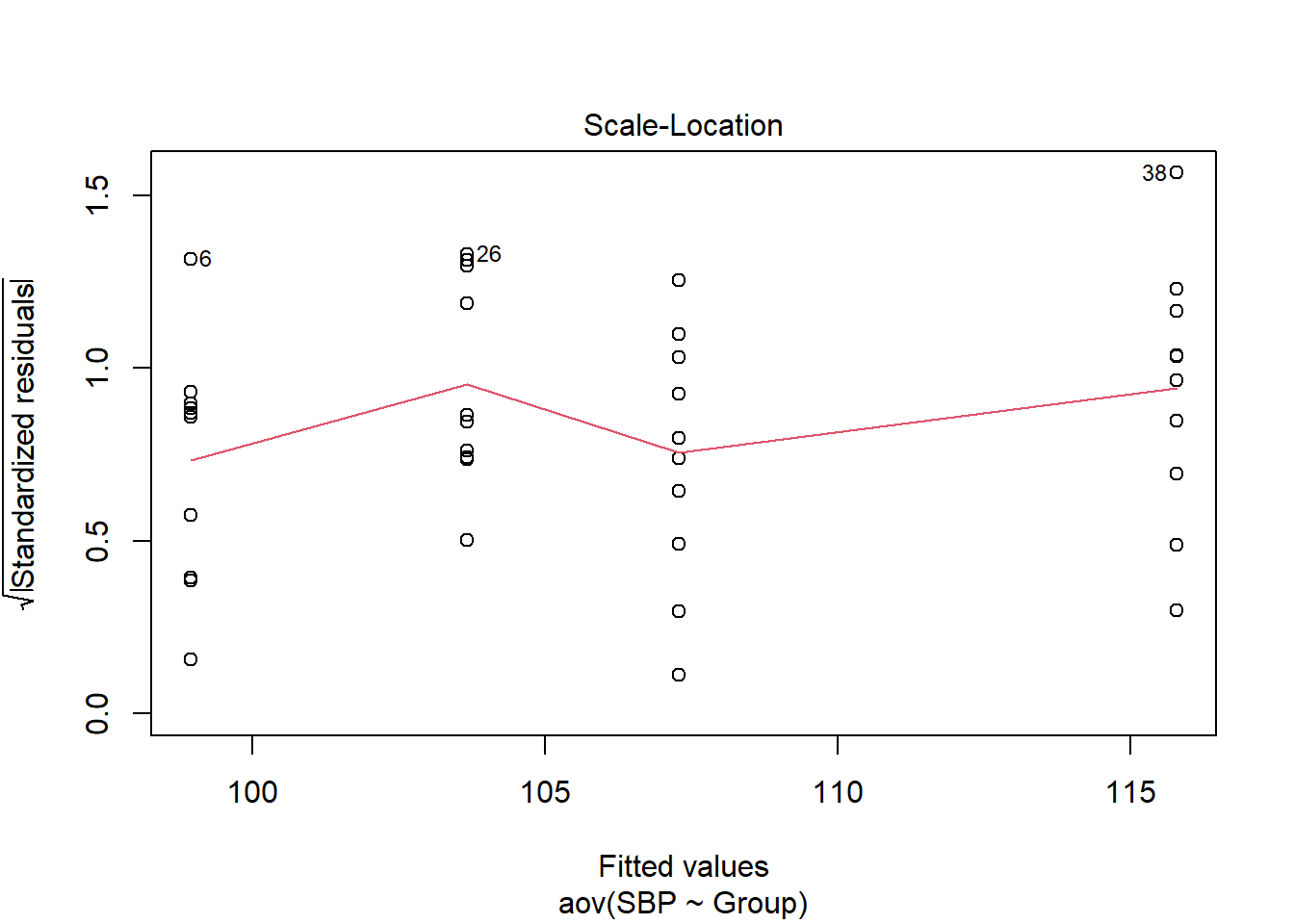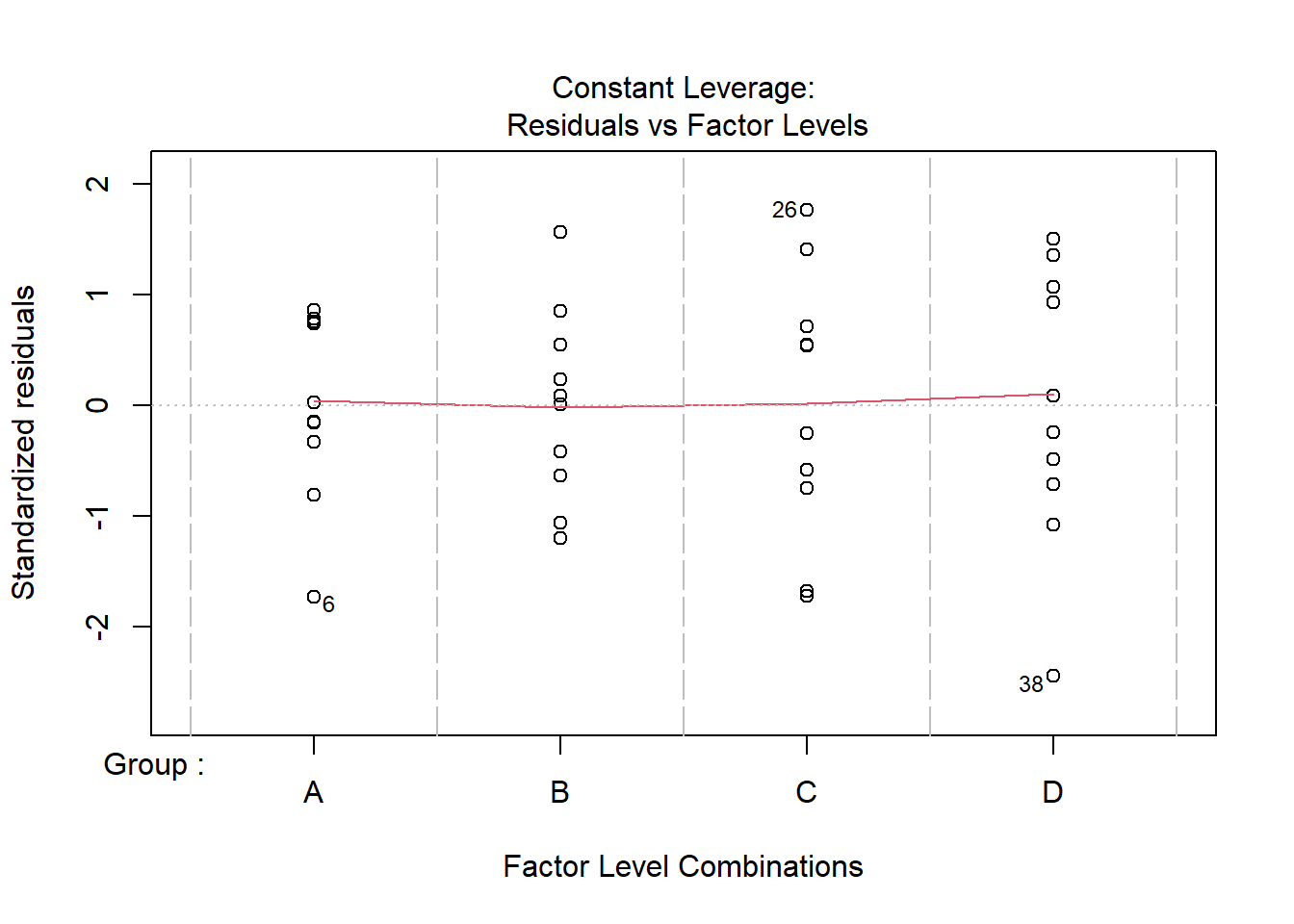Section 38 One-way ANOVA: function aov
The function
aovalso fits an analysis of variance model by a call tolmfor each stratum for a balanced experimental design.This provides a wrapper to
lmfor fitting linear models to balanced or unbalanced experimental designs.The main difference from
lmis in the way print, summary and other R objects are handled and presented: this is expressed in the traditional language of the analysis of variance rather than that of linear models.If the formula contains an
Errorterm, this is used to specify error strata, and appropriate models are fitted within each error stratum.If you have multiple error terms in the data, then the
aovis the appropriate function to fit anova model.
38.1 Estimates: Effects
\[ \large fm.aov \leftarrow aov(SBP \sim Group, \space data=BP) \]
\[ \large aov(fm.aov) \]
38.2 Using aov function
# function `aov`
fm.aov <- aov(SBP ~ Group, data = BP)
# function `aov` with error stratum
# fm1.aov <- aov(SBP ~ Group + Error(factor(ID)), data=BP)
# Analysis of variance
summary(fm.aov) Df Sum Sq Mean Sq F value Pr(>F)
Group 3 1522 507.2 7.498 0.000506 ***
Residuals 36 2435 67.6
---
Signif. codes: 0 '***' 0.001 '**' 0.01 '*' 0.05 '.' 0.1 ' ' 1Tables of effects
Group
Group
A B C D
-7.484 0.868 -2.754 9.371
Standard errors of effects
Group
2.601
replic. 10Tables of means
Grand mean
106.4223
Group
Group
A B C D
98.94 107.29 103.67 115.79
Standard errors for differences of means
Group
3.678
replic. 10


